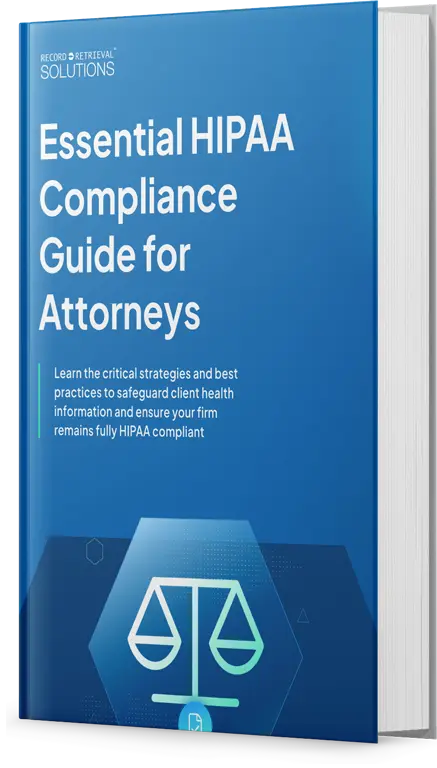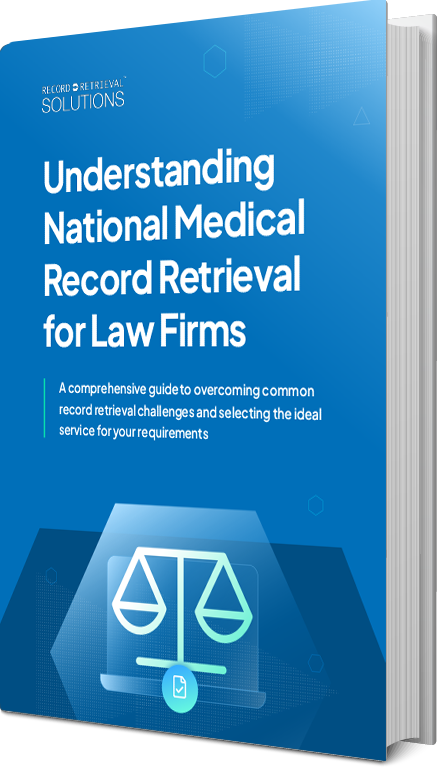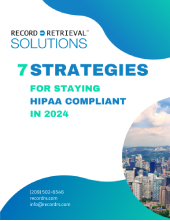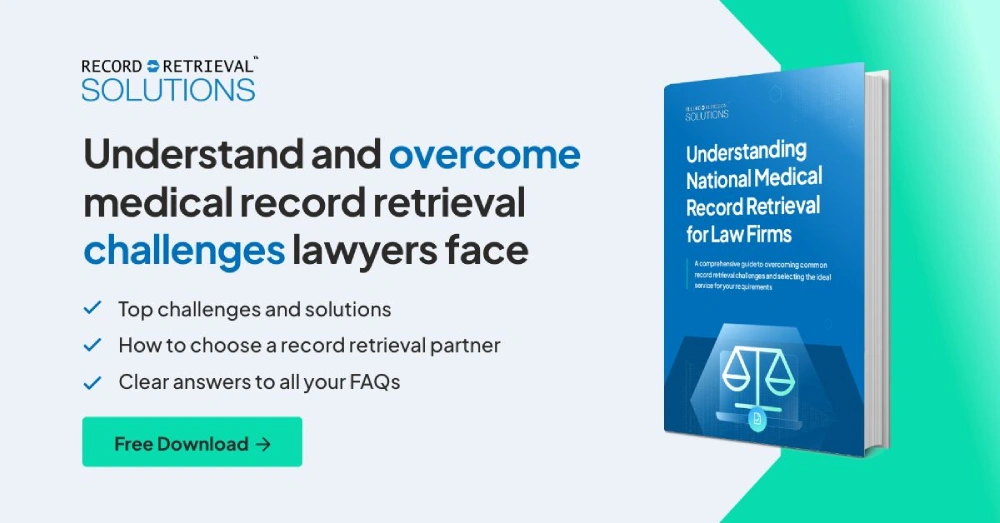In today’s digital age, the electronic sharing of medical records has become a common practice, offering a quick and convenient method for transferring vital health information between healthcare providers, patients, and insurance entities. Email, in particular, serves as a familiar and accessible tool for such exchanges, allowing for the immediate dispatch and receipt of detailed medical data. This method of communication can greatly expedite medical processes, such as consultations, referrals, and claims processing, enhancing the overall efficiency of healthcare services. It provides patients and doctors a way to quickly share information without the delays associated with traditional postal services, potentially leading to faster diagnosis and treatment.
However, despite its convenience, emailing medical records is not without significant concerns, primarily centered around the security and privacy of the sensitive information being transmitted. Medical records contain highly confidential data, and the inherent security vulnerabilities of standard email communication pose a risk of unauthorized access and data breaches. There is also the issue of compliance with stringent healthcare regulations, such as HIPAA in the United States, which sets forth specific standards for the protection of health information. Healthcare providers and patients must be cognizant of these risks and regulatory requirements to ensure that the use of email to share medical records does not inadvertently lead to privacy violations or legal complications.
Overview of Emailing Medical Records
Medical records encompass a wide array of health-related information, including patient history, diagnostic test results, treatment plans, surgical procedures, and outcomes, as well as personal identification details. These records are meticulously documented by healthcare providers to track a patient’s medical history and guide future treatment decisions. Essentially, they form a comprehensive dossier that provides a chronological insight into a patient’s health status, interventions by healthcare professionals, and the patient’s response to such treatments over time. As a critical component of healthcare administration, these records not only support day-to-day medical decisions but also serve for legal, billing, and historical purposes, ensuring the continuity and coordination of care across different healthcare settings.
Patients and healthcare providers may opt to email medical records for a variety of reasons. For patients, emailing can facilitate more proactive involvement in their own healthcare management by making it easier to share their medical history with multiple specialists or to transfer records when changing providers. This can be especially important for those managing chronic conditions that require coordinated care across various medical disciplines. For healthcare providers, emailing records can expedite the referral process, enable rapid consultation with colleagues, and streamline the continuity of care when a patient is referred to another specialist or requires emergency interventions. The speed and convenience of email can significantly enhance communication efficiency, leading to quicker diagnoses and the initiation of appropriate treatments, ultimately improving patient outcomes. However, this practice must be carefully managed to ensure compliance with healthcare regulations and to safeguard patient privacy.
Legal Considerations
When discussing the electronic transmission of medical records, such as emailing, it is essential to understand the legal framework that governs these activities, particularly concerning privacy and security. In the United States, the Health Insurance Portability and Accountability Act (HIPAA) sets the standard for protecting sensitive patient information when it is handled electronically. HIPAA requires healthcare providers, insurance companies, and their business associates to safeguard the privacy and security of identifiable health information, stipulating strict guidelines on how this information can be accessed, used, and disclosed. This regulation aims to protect patient data while still allowing the necessary flow of information needed to provide and promote high-quality health care.
To comply with HIPAA and similar regulations in other jurisdictions, entities that handle medical records must implement several measures. First, any electronic transmission of medical records, including via email, must be secured, often necessitating the use of encryption technologies that ensure data is unreadable to unauthorized individuals. Encryption protects the integrity of the data during transmission and ensures that the information is accessed only by intended recipients. Additionally, entities must secure explicit consent from patients before their health information is shared or sent via email. This consent should detail the specific information to be shared, the purpose of the sharing, and who will be receiving the data. Documentation of this consent is crucial and must be managed carefully to maintain compliance.
Moreover, healthcare providers must also ensure that any electronic communication systems used to transmit medical records comply with other HIPAA rules concerning the safeguarding of electronic protected health information (ePHI). This includes implementing secure access controls, audit controls, and integrity controls, as well as ensuring physical security of the systems and transmission networks. Compliance also requires regular risk assessments to identify and address vulnerabilities in the electronic handling and transmission of medical records. These assessments help healthcare providers and associated entities stay vigilant against potential security breaches and ensure that patient data is handled responsibly and in accordance with the law. Failure to adhere to these legal requirements can lead to severe penalties, including fines and legal actions, underscoring the importance of rigorous compliance measures in the management and transmission of medical records.
Security Risks
Emailing medical records introduces several security risks, primarily due to the potential interception of emails by unauthorized parties. Since standard email protocols do not inherently encrypt messages, sensitive information such as medical records can be exposed to cyber threats during transmission. Interception can occur on unsecured networks, such as public Wi-Fi, where hackers can easily access data flowing through the network. Furthermore, emails can be misdirected, either through human error or system flaws, leading to confidential information being sent to unintended recipients. Such breaches not only compromise patient privacy but also violate regulations like HIPAA, potentially resulting in severe legal and financial consequences for healthcare providers.
In addition to interception risks, medical record emails are susceptible to various forms of cybersecurity threats including phishing and malware attacks. Phishing scams involve fraudulent emails disguised as legitimate requests for information or urgent communications, which aim to deceive the recipient into revealing sensitive information or clicking on malicious links. These links can then install malware on the healthcare provider’s system, giving attackers access to secured data. Malware can also be directly embedded in email attachments, which, when opened, can infect the system. These cybersecurity threats can lead to data theft, ransomware attacks, and significant disruptions to healthcare operations, highlighting the critical need for robust security measures when emailing medical records.
Safer Alternatives to Email
In response to the security vulnerabilities associated with traditional email, the healthcare industry has increasingly adopted more secure methods of transmitting medical records. One of the most prevalent alternatives is the use of secure patient portals, which are part of electronic health record (EHR) systems. These portals provide a secure, encrypted platform where medical records can be accessed and shared without the risks associated with standard email. Patients can log into these portals using secure credentials to view their health information, communicate with healthcare providers, and download or transmit their records to other authorized users. Another secure method is the direct exchange systems that allow healthcare providers to transmit data directly to each other through encrypted channels, significantly reducing the risk of interception by unauthorized parties.
Comparing these alternatives to traditional email reveals several pros and cons. On the positive side, secure patient portals and direct exchange systems offer enhanced security measures, including end-to-end encryption and strong authentication protocols, which safeguard the confidentiality and integrity of medical data. These methods also comply with stringent healthcare regulations like HIPAA in the U.S., providing an additional layer of legal protection. Furthermore, these systems often include features for tracking access and modifications to records, providing an audit trail that can be critical in the event of a security investigation or compliance review.
However, there are also downsides to consider. Implementing and maintaining secure patient portals and direct exchange systems can be costly and technically complex, requiring significant upfront investment and ongoing administrative overhead. Additionally, these systems may be less convenient for patients and healthcare providers who are accustomed to the simplicity and immediacy of email. There can also be challenges with interoperability, especially when different healthcare providers use different EHR systems that may not communicate seamlessly. Despite these challenges, the benefits of enhanced security and compliance with health data regulations make these secure alternatives increasingly preferable to traditional email for the transmission of sensitive medical information.
Best Practices for Emailing Medical Records
When the emailing of medical records is necessary, it is critical to adhere to best practices that enhance the security and privacy of the sensitive data being transmitted. One fundamental measure is the use of encryption. Emails containing medical information should always be sent through secure, encrypted email services that conform to healthcare regulations such as HIPAA in the U.S. Encryption should cover both the message itself and any attachments containing medical records to ensure that the content is unreadable to anyone other than the intended recipient. Additionally, healthcare providers should consider the use of password-protected documents, adding an extra layer of security. This requires the recipient to enter a password to open the document, which should be communicated via a different channel (e.g., phone call or secure messaging service).
Healthcare providers must also implement stringent policies and training for all staff involved in the emailing of medical records. This includes educating them on recognizing phishing attempts and other common cyber threats. Providers should ensure that all emails are addressed correctly to avoid accidental sending of sensitive information to the wrong recipient. Regular audits and updates to security protocols are essential to adapt to evolving cybersecurity threats. Furthermore, it’s important for providers to obtain explicit consent from patients before sending their medical records via email, clearly documenting this consent in the patient’s health record.
For patients, it’s important to understand the risks associated with receiving medical records by email and to take proactive steps to protect their data. This includes using a secure, private email account and ensuring their computer or mobile device is protected with up-to-date antivirus software and a strong firewall. Patients should also be wary of any unexpected email attachments, even if they appear to be from a known healthcare provider, and should verify the legitimacy of such communications by contacting the provider directly. By following these best practices, both healthcare providers and patients can contribute to the safe and secure emailing of medical records, minimizing the risk of unauthorized access and ensuring compliance with relevant legal standards.
The Future of Medical Record Sharing
The future of medical record sharing is poised to be transformed by several emerging technologies and trends, notably blockchain and advanced encryption technologies. Blockchain technology, renowned for its decentralized and immutable ledger capabilities, offers a promising solution to the challenges of medical record management and security. By allowing medical records to be stored in a secure, unalterable format, blockchain can facilitate a transparent yet completely secure exchange of medical data between authorized parties. This could dramatically enhance patient privacy and trust, as well as streamline the interoperability between different healthcare systems, ensuring that medical histories are accessible and accurate, regardless of the provider or location.
Enhanced encryption technologies are also set to play a critical role in the future of medical data exchange. As cyber threats become more sophisticated, so too must the methods to counteract them. Next-generation encryption methods, such as quantum encryption, could one day secure medical records against virtually all forms of cyber intrusion, making unauthorized access and data breaches nearly impossible. Such technologies would provide a more robust defense of sensitive health information, facilitating safer electronic transmissions of medical records.
As these technologies mature, the landscape of medical data exchange is expected to evolve significantly. We might see a shift towards fully integrated health information exchanges (HIEs) that leverage blockchain for enhanced security and data integrity. This would not only ensure seamless access to patient records across different health providers but also empower patients by giving them greater control over who accesses their medical records. Additionally, as more healthcare systems adopt these advanced technologies, the standard for privacy and security in medical data exchange will likely rise, leading to broader changes in regulations and compliance requirements. The integration of AI and machine learning could further refine the processing and analysis of big medical data sets, paving the way for more personalized and timely healthcare delivery.
The discussion around emailing medical records highlights several risks and recommendations that are critical for maintaining the integrity and privacy of sensitive health information. Primary among these risks is the potential for data breaches and unauthorized access due to the inherent security weaknesses of standard email communication. To mitigate these risks, healthcare providers are advised to utilize encryption for both the body and attachments of emails containing medical records, and to ensure that communications are sent via secure, encrypted email services. Additionally, the use of password-protected documents and obtaining explicit patient consent before transmission are recommended best practices that add further layers of security.
The importance of adhering to legal and security standards cannot be overstressed when it comes to protecting patient privacy. Laws such as the Health Insurance Portability and Accountability Act (HIPAA) in the U.S. provide a regulatory framework designed specifically to safeguard personal health information. Compliance with these laws not only helps in protecting patient data but also shields healthcare providers from legal repercussions and hefty fines associated with data breaches. By following these established guidelines, healthcare professionals can maintain the trust placed in them by their patients and the broader community.
Given the complexity of legal and technical requirements associated with emailing medical records, it is highly advisable for healthcare organizations to consult with healthcare IT professionals or legal advisors. These experts can provide the necessary guidance to ensure that the organization’s practices are fully compliant with current regulations. Regular training for all staff involved in handling patient data should also be implemented to keep abreast of the latest security practices and regulatory changes.
Lastly, staying updated with the latest developments in laws and technologies related to medical record sharing is essential. Healthcare providers can benefit from signing up for relevant newsletters or following specialized blogs and publications in the field. These resources can be invaluable in providing timely updates and insights, helping providers stay informed of new regulatory requirements and emerging technologies that could impact their operations. Engaging with these resources will empower healthcare providers to continually refine their practices and enhance the security and efficiency of medical record management.
Disclaimer: The information provided on this page regarding the emailing of medical records is intended for general informational purposes only. It does not constitute legal advice and may not be applicable to your specific circumstances. We encourage readers to consult with professional legal advisors to ensure full compliance with HIPAA and other applicable laws before transmitting any protected health information (PHI) electronically. Compliance with HIPAA privacy, security, and breach notification rules is critical, and adherence to the appropriate protocols and encryption standards is necessary to protect patient information.









